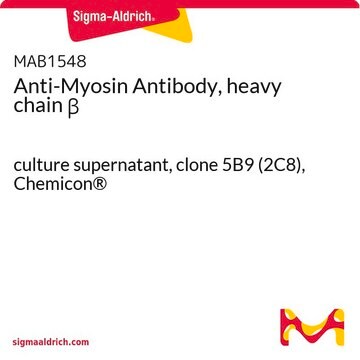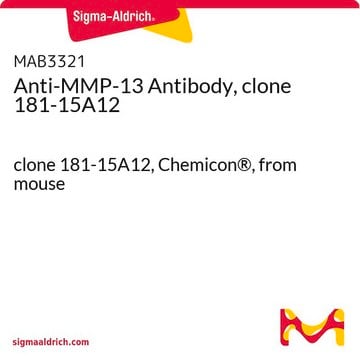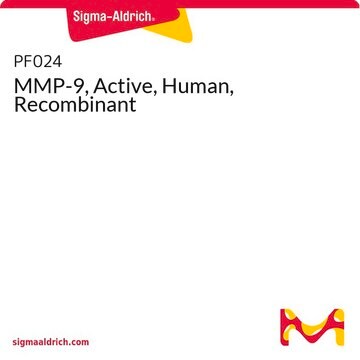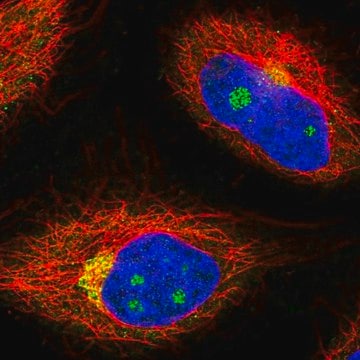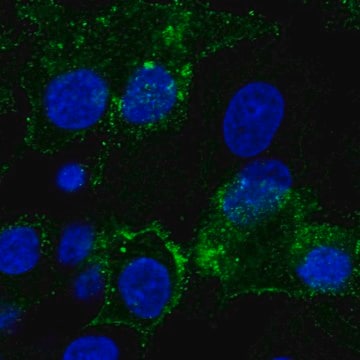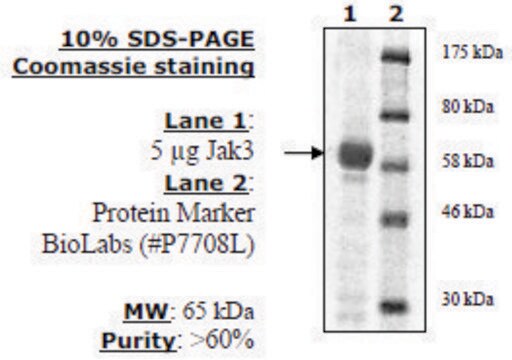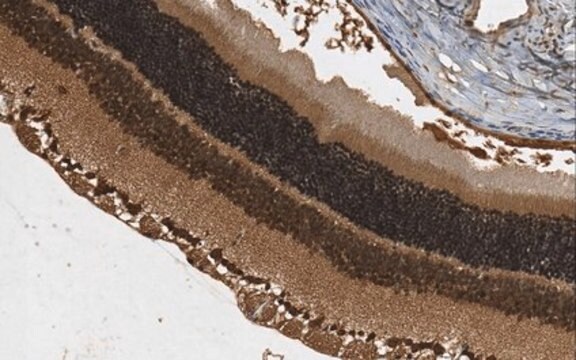MAB1552
Anti-Myosin Antibody, ventricular heavy chain α/β, clone F26.2D11
culture supernatant, clone F26.2D11, Chemicon®
Sign Into View Organizational & Contract Pricing
All Photos(1)
About This Item
UNSPSC Code:
12352203
eCl@ss:
32160702
NACRES:
NA.41
Recommended Products
biological source
mouse
antibody form
culture supernatant
antibody product type
primary antibodies
clone
F26.2D11, monoclonal
species reactivity
human
manufacturer/tradename
Chemicon®
technique(s)
immunohistochemistry: suitable
western blot: suitable
isotype
IgG2a
NCBI accession no.
shipped in
dry ice
target post-translational modification
unmodified
Gene Information
human ... MYH6(4624)
Specificity
Recognizes the LMM (light meromyosin) fragment of human ventricular myosin heavy chain (type alpha/beta)
Immunogen
Epitope: ventricular heavy chain alpha/beta
Human ventricular myosin
Application
Anti-Myosin Antibody, ventricular heavy chain α/β, clone F26.2D11 is an antibody against Myosin for use in WB, IH.
Immunochemistry: undiluted to 1:10
Western blotting: 1:10
Optimal dilutions must be determined by the end user.
Western blotting: 1:10
Optimal dilutions must be determined by the end user.
Legal Information
CHEMICON is a registered trademark of Merck KGaA, Darmstadt, Germany
Not finding the right product?
Try our Product Selector Tool.
recommended
Storage Class Code
12 - Non Combustible Liquids
WGK
nwg
Flash Point(F)
Not applicable
Flash Point(C)
Not applicable
Certificates of Analysis (COA)
Search for Certificates of Analysis (COA) by entering the products Lot/Batch Number. Lot and Batch Numbers can be found on a product’s label following the words ‘Lot’ or ‘Batch’.
Already Own This Product?
Find documentation for the products that you have recently purchased in the Document Library.
Elizabeth M Grey et al.
American journal of physiology. Heart and circulatory physiology, 285(1), H90-H96 (2003-03-15)
Conflicting reports exist regarding the influence of beta-adrenergic stimulation on the maximum velocity of shortening (Vmax) in ventricular myocytes. This may be due to an unrecognized effect of maturation. In the present study, the effects of beta-adrenergic receptor stimulation on
Regulation of gap junction protein (connexin) genes and function in differentiating ES cells.
M Oyamada et al.
Methods in molecular biology (Clifton, N.J.), 185, 63-69 (2002-01-05)
Carl W Tong et al.
Circulation research, 103(9), 974-982 (2008-09-20)
Normal cardiac function requires dynamic modulation of contraction. beta1-adrenergic-induced protein kinase (PK)A phosphorylation of cardiac myosin binding protein (cMyBP)-C may regulate crossbridge kinetics to modulate contraction. We tested this idea with mechanical measurements and echocardiography in a mouse model lacking
Armita M Gorabi et al.
Journal of cellular physiology, 234(2), 1534-1546 (2018-08-06)
The discovery of gene- and cell-based strategies has opened a new area to investigate novel approaches for the treatment of many conditions caused by cardiac cell failure. The TBX18 (T-box 18) transcription factor is considered as a prominent factor in
Our team of scientists has experience in all areas of research including Life Science, Material Science, Chemical Synthesis, Chromatography, Analytical and many others.
Contact Technical Service